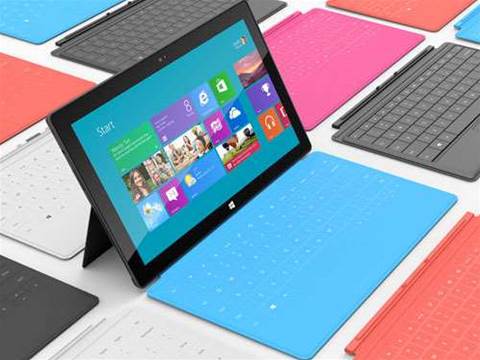Windows RT is struggling – do its poor sales mark the end of the Windows-on-ARM experiment, or should Microsoft keep pushing its alternative OS?
Windows RT was supposed to be Microsoft’s answer to mobile OSes, offering a version of Windows without the desktop for ARM tablets. However, since its launch last October, Windows RT has picked up only a 0.02% share of the global OS market, according to analytics firm Net Applications.
Furthermore, IDC figures report that the five tablet models running Windows RT have sold only one million units between them so far in the first quarter of the year. Analyst firm Gartner has stated: "RT is struggling to find a place in the market."
Windows RT’s struggles come alongside low numbers upgrading to big-brother Windows 8, leaving Microsoft in a precarious position, with its ARM experiment failing to help prop up its standard OS.
So what has happened to Windows RT? Is it a doomed idea, or merely a marketing failure that could yet be rectified?
What went wrong?
According to analysts, Windows RT devices have struggled to sell because of the limited hardware options – and high prices.
Aside from Microsoft’s Surface RT, only four other manufacturers currently make hardware using the OS: Asus’ VivoTab RT, Dell’s XPS 10, Lenovo’s IdeaPad Yoga 11 and Samsung’s Ativ Tab RT.
But finding the devices on a store shelf is another matter; availability was restricted to a handful of retailers. PC World sold the Surface RT and Lenovo’s Yoga, while John Lewis offered the Samsung Ativ – but only online; a sticking point for a device that costs £550 and a problem exacerbated by retail chains not understanding the benefits and limitations of the OS.
Contrary to the analysts’ figures, retailers put a more positive spin on Windows RT sales. According to a spokesperson for Dixons, tablets running RT had been "performing well" in shops, but the retailer wouldn’t divulge sales figures. Although sales may be perking up now that prices for the devices have fallen. Dixons has slashed the price of the Lenovo Yoga 11 from £699 to £499, while Amazon reduced the Asus VivoTab RT from £559 to £529.
Analysts suggested the prices were too high to start with, and they certainly didn’t compare well with rival tablets on more established OSes. Take the 64GB Asus VivoTab RT, which launched at £559. While that’s in line with the 64GB iPad’s price, Google’s similarly sized 32GB Nexus 10 costs £389.
"Prices are too high compared to Apple and Android, and the ecosystem is still weak," said Carolina Milanesi, research vice president for consumer devices at Gartner. "This leaves consumers struggling to justify a purchase."
One of the reasons for the higher prices was the licence fee for using RT, adding to manufacturers’ overheads when making tablets. It’s hard to compete with the free Android.
"Microsoft asked its partners to pay a very high price to use RT – despite the fact that Android is free; Windows RT devices are competing with products such as the Nexus 7 and Amazon Kindle Fire that sell for $199 or less," said Tom Mainelli, IDC research director for tablets. "I think Microsoft overestimated the value of adding a version of Office into the RT package."
Consumer confusion
The sales issues around Windows RT were exacerbated by consumer confusion, with retailers mislabelling the OS that the tablets were running. Argos, for example, was selling Samsung’s device as the "Samsung Ativ Windows 8 tablet", leading to complaints on its website.
It made the same mistake for the Dell XPS 10, while Tesco was offering an Asus VivoTab running an OS described as "Microsoft Windows 8 RT".
If retailers are confused by what RT means, so too are consumers, leaving little hope they’ll be persuaded to part with their cash – especially when cheaper rivals abound.
"On the day that Microsoft launched Windows 8, considered by some to be the most important launch in the company’s history, it rolled out its first Surface product, and it wasn’t running its premier operating system," said Mainelli. "Even today, Microsoft continues to struggle to tell a compelling story around Windows RT. This is also dragging down Windows 8 adoption, since it really muddies the water for consumers. With confusion surrounding Microsoft’s offerings, consumers simply take the path of least resistance and choose iOS or Android."
What next?
The troubling sales give Microsoft two options, analysts said: cut prices or kill off Windows RT.
Microsoft has already said it expects smaller devices – possibly 7in tablets – to arrive running the latest version of Windows, and Gartner’s Milanesi said this could help Windows RT.
"I think RT, as an ARM architecture, could work on smaller devices focused on content consumption. This, plus a lower price and a richer ecosystem, should get consumers’ attention," said Milanesi. "There’s no question Microsoft needs to win the consumers in the tablet and the phone space. Whether or not it does this with RT doesn’t really matter," she added.
IDC’s Mainelli thinks Microsoft should take the other road and kill off the struggling platform. "I’d like to see Microsoft drop Windows RT and focus on driving adoption of Windows 8," he said. "I don’t think that will happen, though. Microsoft feels like it has devoted too much time and money to Windows RT to just drop it, and so it will continue." If it’s to salvage RT, then Microsoft will need to right several wrongs from its initial foray.





.jpg&h=142&w=230&c=1&s=1)
.png&h=142&w=230&c=1&s=1)
_(21).jpg&h=142&w=230&c=1&s=1)




.jpg&w=100&c=1&s=0)
_(8).jpg&w=100&c=1&s=0)










